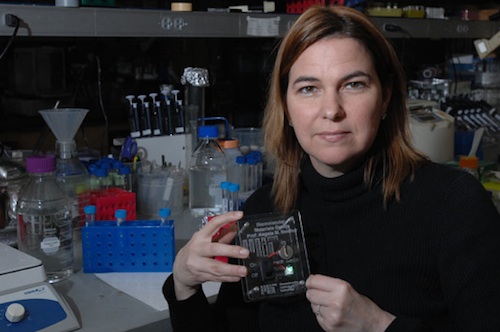Batteries are a big industry; that’s definitely part of the excitement around Tesla right now. But the problem is, the way we make batteries currently is somewhat ineffective and can be harmful to the environment. What if, instead, we made them out of viruses? That work is actually being done. Here’s the good part:
As we try to increase the amount of energy that can be stored and make batteries rechargeable for more cycles, not just any material will do: we need ones that are more abundant and more environmentally friendly. As you know, you can’t just throw a traditional battery away because many of the materials currently used, including cadmium and lead, can be toxic to the environment. That’s why we are focusing on rechargeable bio-batteries.
And here’s the tough part:
Our bio-batteries are still experimental. We have been able to demonstrate really great performance but at the moment they don’t have the lifetimes to compete with commercially available batteries. We can only power small devices such as flashlights, laser pointers, watches and LED lights. For devices like cars and computers, which require significantly more energy and longer usage time, we would need to improve the power performance first.
What we need here is more power, then. The good things are (apparently) you can work with viruses at lower temperatures, and you can tweak the genetic coding to get them to bind where you want. The ultimate goal, then, is:
We also want to make them rechargeable for thousands of cycles. Currently, we have batteries that are rechargeable for hundreds of cycles. Our eventual aim is to use viruses to not only power our everyday electronics but also the electric cars of the future.
Viruses powering driverless cars, eh? Is that our future? Run for the hills, y’all.
(I’m kidding; I actually think that would be kind of cool.)
